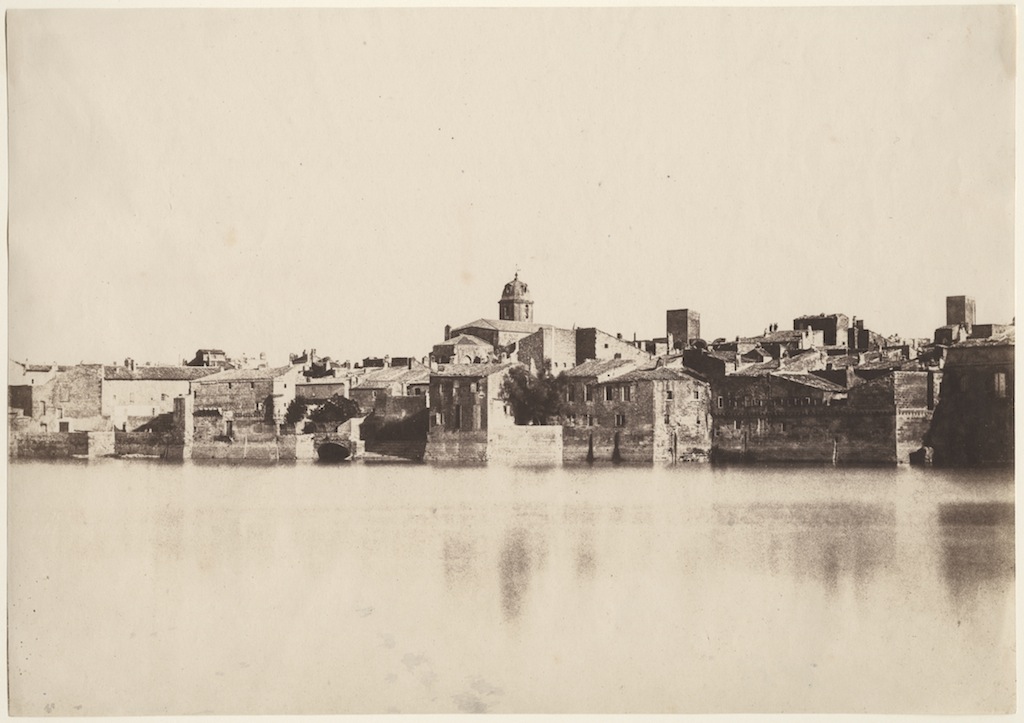
© Charles Nègre Courtesy Hans P. Kraus Jr. Fine Photographs
HANS P. KRAUS JR 962 Park Avenue at 82nd Street 10028 New York États-Unis
« Photography invokes effects that make us dream, simple patterns that excite us, powerful and bold silhouettes that surprise and frighten us.…» – Charles Nègre
New York – Hans P. Kraus Jr. Fine Photographs will present an exhibition of more than 40 early photographs by French photographer Charles Nègre (1820-1880) from September 17 through November 1, 2013. Nègre is primarily known for his landscapes and architectural photographs of Paris and the South of France made in the 1850s. The exhibition will be the first one-man show of Nègre’s photographs in the United States. A fully illustrated catalogue will accompany the exhibition.
Charles Nègre began taking photographs in 1844, just five years after the discovery of photography. Attracted to the medium as a way to collect visual images for his painting, Nègre quickly mastered photography, using a process modified by fellow student Gustave Le Gray.
As photo historian Larry Schaaf writes in the catalogue introduction, “Although Nègre always identified himself as a painter, not primarily as a photographer, his photography began to influence his paintings. While he might have originally intended his photographs merely as studies, increasingly his paintings became new iterations of his photographs.”
Nègre worked in the studios of several important painters of the time, including Jean-August-Dominique Ingres. Later he shared a studio with fellow student Charles-François Daubigny, the Barbizon School painter who influenced the Impressionists. Nègre’s paintings were accepted into the Salon des Beaux-Arts beginning in 1843, and he contributed regularly to this venue for many years.
Negre’s artistic evolution from painter to photographer mirrored that of other important early photographers like Le Gray and Roger Fenton, and his formal training as a painter informed Negre’s photographic compositions. Nègre wrote after photographing in the South of France in 1852, “Being a painter myself, I have kept painters in mind. Wherever I could dispense with architectural precision, I have indulged in the picturesque… I have sacrificed a few details, when necessary, in favor of an imposing effect that would give a monument its real character and also preserve the poetic charm that surrounds it.”

© Charles Nègre Courtesy Hans P. Kraus Jr. Fine Photographs
Among the highlights in the exhibition is Une rue à Grasse, 1852, a waxed salt print of a street in Nègre’s hometown, which, with its dynamic abstract composition anticipates 20th-century art photography. Jacob W. Lewis, a historian of 19th-century art and photography, notes in the catalogue, “This view of Grasse and its sun-soaked buildings and oil presses that line up on a steep zigzag road, interlocking like puzzle pieces, is no mere indulgence in the picturesque. Rather, it represents a test for photography as a means to capture the infinite variety of rough-hewn Provence into a fully considered tableau of pleasing effects, where no element is without its formal significance.” Another print is in the collection of The Metropolitan Museum of Art in New York.
To find a salt print matched to its original paper negative is particularly rare. The exhibition will feature ten such pairs, including View from the banks of the Rhone, Arles, taken during the artist’s photographic expedition to the South of France in 1852. The photograph features a Roman arena built in the 1st century CE, and Nègre’s modifications to the negative create a dramatic and crisp view of the skyline of this ancient riverside town.
Another featured pair will be a striking image of Notre-Dame, Paris, c. 1853, with a negative that is a very close variant. As Lewis points out, “Unlike his contemporaries, Nègre obtained an unobstructed view of the towers and portals, a position that effectively isolates the monument as a unified work of art within the image’s frame.”
Among Nègre’s most touching portraits are those of Paris chimney sweeps. In 19th- century France, droves of young boys were brought from rural Savoy to Paris. They provided a crucial service but worked under brutal conditions at great personal risk. The unique circular salt print from a waxed paper negative of Le petit ramoneur, 1851, solitarily posed against a rough stone wall suggests the artist’s compassion for these under-aged workers.
In 1853, in another unique circular salt print, Nègre posed a worker in the act of cutting stone. Using a lens of his own design and a collodion negative, the brief exposure this combination allowed seemingly captured an instant of motion. With Le tailleur de pierre, Nègre may have been commenting on the famous Courbet painting (now lost), Les Casseurs de pierres, that portrayed laborers breaking stone. Although it would be a number of years before the exposure times would be fast enough to capture motion photographically, Lewis writes, “Negre’s work still supports the notion that the instant…was imagined to be the distinctive terrain of photography rather than painting.”
Work by Charles Nègre is in the collections of many major museums, including The Metropolitan Museum of Art, New York; The Museum of Modern Art, New York; J. Paul Getty Museum, Los Angeles; National Gallery of Canada, Ottawa; and Musée d’Orsay, Paris.
Charles Nègre will be on view at Hans P. Kraus Jr. Fine Photographs from September 17 through November 1, 2013. The exhibition hours are Monday-Friday, Noon to 6:00 pm.

